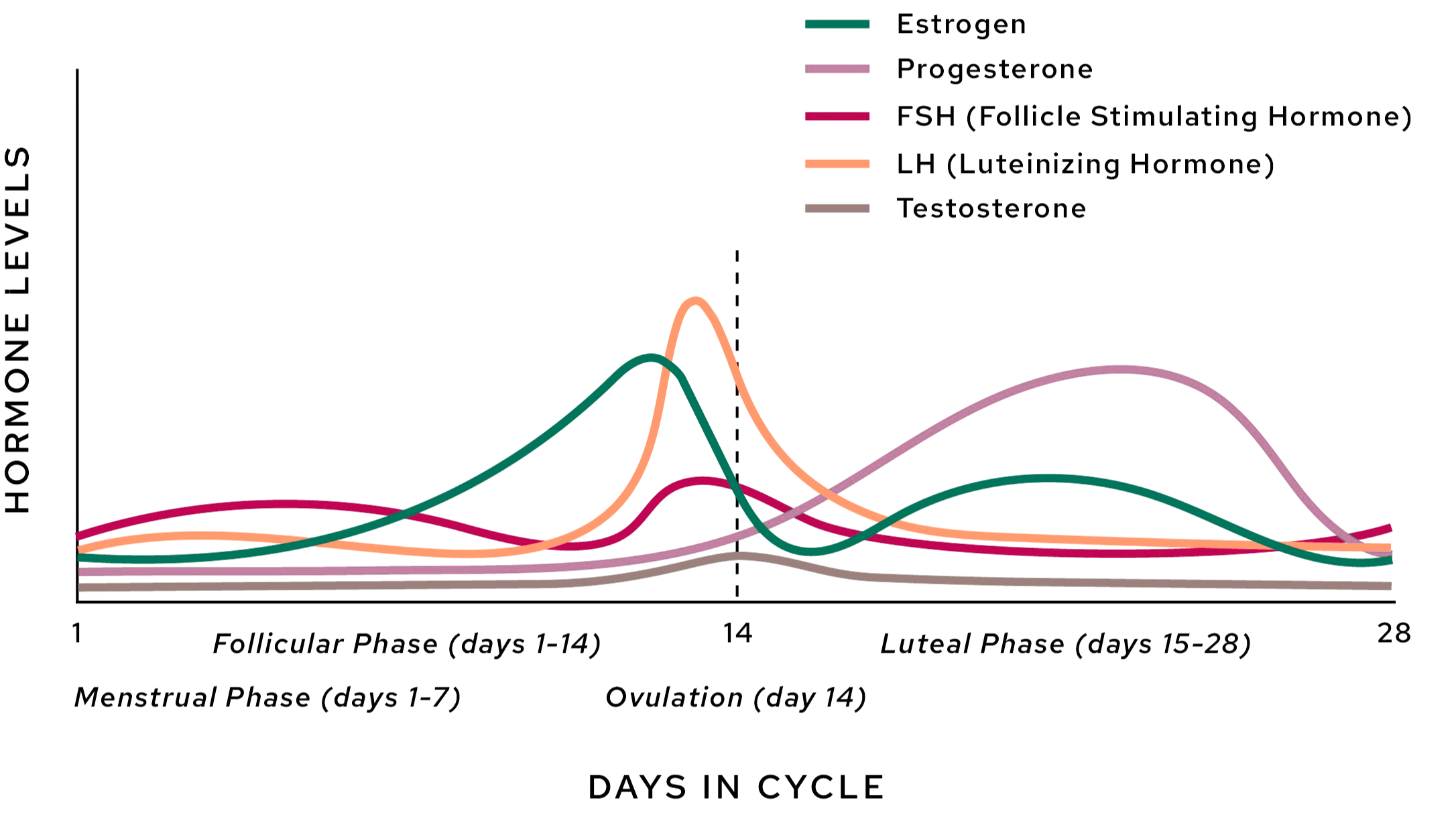Cartilage Regeneration in Humans: Evidence, Metabolism, and Hormones
For decades, we’ve been told that once cartilage is gone, it’s gone for good. But recent research paints a more hopeful picture. A study published in Science Advances by Hsueh et al. (2019), later summarized by Duke Health and analyzed by researcher Ray Peat–inspired writer Haidut, reveals that humans retain a salamander-like ability to renew their cartilage, and that this capacity likely can be supported through metabolism, hormones, and lifestyle.
These discoveries suggest that while cartilage repair in adults is slow, it does and can happen. The body still holds the blueprint for regeneration; we simply have to learn how to support it. With the degradation in nutrient content in our western diets, if you want a chance at regrowing your cartilage you need to eat and live very deliberately.
What the Study Found
The Duke and Hsueh research teams examined the “age” of cartilage proteins from the hip, knee, and ankle, using a molecular clock based on subtle chemical changes that accumulate over time.
They discovered:
Cartilage turnover depends on location. The ankle has the highest rate of renewal, followed by the knee, then the hip. This may explain why ankle arthritis is comparatively rare even though ankles bear heavy daily/constant loads.
Surface cartilage renews more readily than deep layers. The outermost zones, like those closer to joint fluid, showed more protein replacement, which suggests that circulation, movement, and local nutrient delivery play a role.
Regenerative microRNAs are active in human joints. These same regulatory molecules help salamanders and zebrafish regrow limbs. Humans have them too, particularly in the joints that show greater turnover.
Duke’s summary: “We call it our inner salamander capacity.” It describes the biological truth that regeneration never really disappears, it only slows down with age, nutrient deficiencies and stress.
How Metabolism and Hormones Could Influence Regeneration
In his analysis of this study, Haidut emphasized that cartilage repair may depend on maintaining a high cellular metabolism, which is the same inner vitality that drives tissue renewal and turnover throughout the body.
He points out that:
A sluggish metabolic rate (low thyroid activity, chronic stress, calorie restriction) may slow protein synthesis and turnover in cartilage.
Conversely, supporting metabolism through balanced nutrition, thyroid function, and warmth could help activate those dormant regenerative pathways.
Progesterone, a hormone with anti-inflammatory and regenerative properties, appears to enhance tissue renewal and collagen synthesis in several models. Haidut suggests that maintaining healthy progesterone levels, either through the body’s natural production or supplementation when appropriate, could theoretically support joint repair.
While these ideas haven’t yet been tested directly in clinical cartilage studies, they fit within a larger picture of how the body heals: a well-nourished, hormonally balanced system regenerates better than a depleted one.
Using Progesterone Wisely
Progesterone can be a powerful ally in tissue repair, metabolic health, and inflammation balance, but it needs to be used with awareness. While true overdose is rare with bioidentical progesterone, taking more than your body can handle, or using it at the wrong time, can disrupt hormone rhythm and slow healing rather than support it. The right approach depends on whether you’re male or female, and where your natural hormone levels are starting from.
Please note that this information is provided for educational purposes and does not constitute medical advice. Consult with your healthcare provider for guidance. For Women
Women naturally produce progesterone after ovulation, so supplementation works best when timed to mimic that rhythm, typically during the luteal phase (~ days 15–28 of the cycle). Using it too early or in excess can delay ovulation, cause breakthrough bleeding, or create symptoms such as fatigue, brain fog, bloating, breast tenderness, or low mood.
If cycles are irregular or you’re in perimenopause, you can either choose a low nightly dose (around 10–30 mg topical or 50–100 mg oral) and adjust slowly under guidance. This is a good option if you’re dealing with symptoms like insomnia, anxiety or hot flashes. Another option, which is more like a classic perimenopause support would be to mimic a natural cycle by following the 28-day schedule above, taking progesterone during the estimated luteal phase (days 15-28). Regardless of your approach, testing baseline progesterone and thyroid markers and listening to your body will help you dial in the best dose for your physiology.
For Men
Men naturally produce small amounts of progesterone, mostly as a calming and anti-inflammatory neurosteroid. At low doses (often 5–10 mg topical or 10–25 mg oral), it can help lower cortisol, improve sleep, and balance excess estrogen. However, higher or frequent dosing can suppress testosterone, leading to low libido, fatigue, or loss of motivation. Because of that, men should ideally test hormone levels first (progesterone, testosterone, estradiol, and thyroid) and use the smallest effective dose, or explore natural ways to raise their own progesterone production through herbs, nutrition, light, and stress reduction before adding supplemental hormones (generally the best/safest and most holistic approach).
What This Means for Those with Worn-Down Cartilage
If your cartilage or collagen has been eroded by age, overuse, or injury, this research is profoundly hopeful. It means:
Your body is still capable of making new cartilage proteins, regardless of age, especially in certain joints and under the right conditions.
Regeneration happens slowly, but steadily, if the environment supports it. After all, it presumably took a while to get where you are now.
Lifestyle, metabolism, and hormonal balance may all influence how well this renewal unfolds. Most doctors, in my experience, lack the education to be able to diagnose the hormonal factors that are at play with cartilage loss and only prescribe collagen injections and anti-inflammatory drugs, which are really just band-aid fixes, and do not address the root cause.
My approach to addressing cartilage loss is multi-layered: nourish, protect, and stimulate, rather than replace or suppress.
Supporting Natural Cartilage Renewal
From a holistic perspective, this emerging science reinforces what herbalists and integrative practitioners have been saying for a long time: healing happens best when the whole system is balanced.
Here are some practical, evidence-aligned ways to nourish your joints’ innate renewal potential (again, not medical advice, please consult with your healthcare provider before trying anything you read online):
Keep metabolism high. Eat nutrient-dense meals with adequate protein, sugars, and saturated fats to support thyroid function (by avoiding anti-thyroid foods shown in the table below) and warmth. Chronic coldness, fasting, and high stress hormone levels will slow repair as the limited energy supply is prioritized to essential functions like the brain.
Support progesterone and hormonal balance. Adequate rest, balanced blood sugar, and whole-food fats all help the body make progesterone naturally. Some individuals may also use natural progesterone supplements with practitioner guidance.
Provide collagen-building nutrients. Vitamin C, copper, silica, glycine, and proline are all critical for matrix synthesis. To make one cell of joint cartilage, you need all of the building blocks that make up that cell. If any are missing, it will hinder repair. Each of these nutrients is important, and the best, most bioavailable forms will be food-based with minimal additives.
Encourage circulation and joint nourishment. Gentle movement, sunlight, lymphatic self-massage and warmth improve nutrient flow to joint tissues that otherwise lack direct blood supply.
Calm inflammation. Herbs such as turmeric, boswellia, and holy basil, and diets low in polyunsaturated seed oils (which are prone to oxidation => which causes inflammation) can help reduce inflammatory degradation of cartilage. Herbs are not one-size-fits-all. There are many herbs that have similar actions in the body, and an experienced herbalist will be able to pick one or a combination of them that match your unique health picture and constitution.
Anti-Thyroid Foods That Can Hinder Healing
These foods can suppress thyroid function, slow metabolism, and make it harder for the body to repair cartilage and collagen. Limiting or cooking them (where applicable) can support metabolic balance and recovery.
Recipes To Support Joint Health
If you’re curious what this might look like, you can check out these recipes on my website for inspiration. Most of these include joint-nourishing foods that would fit well into a plan to support joint health.
An Emerging but Exciting Field
While this area of research is still developing, it’s pointing us in a direction that aligns completely with holistic principles. Instead of viewing cartilage as a dead, unchangeable tissue, science now recognizes it as a living, responsive matrix that mirrors the vitality of the body itself.
Yes, these studies were done on donor tissue rather than living patients, and yes, we still have much to learn about how to activate these regenerative microRNAs or modulate metabolism for repair, but the groundwork is there, and we can see evidence of the truth in this study when we look at children’s joints. It’s common knowledge that a child’s amputated fingertip can regrow with the right treatment.
Personally, I would love for more research to be done on the effects of frequency in this area. I’ve seen amazing results with frequency devices and homeopathy, and this past year I read the book Vibrational Medicine: The #1 Handbook of Subtle-Energy Therapies by Richard Gerber, MD which described several devices like the Rife Machine (invented in the 20th century by Dr. Royal Raymond Rife). This device would broadcast specific electromagnetic frequencies that were tuned to create certain responses in the body. The Rife Machine became famous in this space for generating a frequency that killed cancer cells, though his work was never validated by pharmaceutical corporation sponsored organizations like the FDA and the American Cancer Society.
The Takeaway
Like the mighty salamander, your joints are capable of renewal beyond youth and even into old age.
The more you support your metabolism, nourish your cells, and maintain hormonal health, the more that innate regenerative capacity has the chance to express itself.
This emerging area of research doesn’t promise overnight regeneration, after all many of us have decades of wear and tear on our joints, but it does offer something far more powerful: a reminder that the body’s design is inherently regenerative. When we feed that design as nature intended, healing follows.










